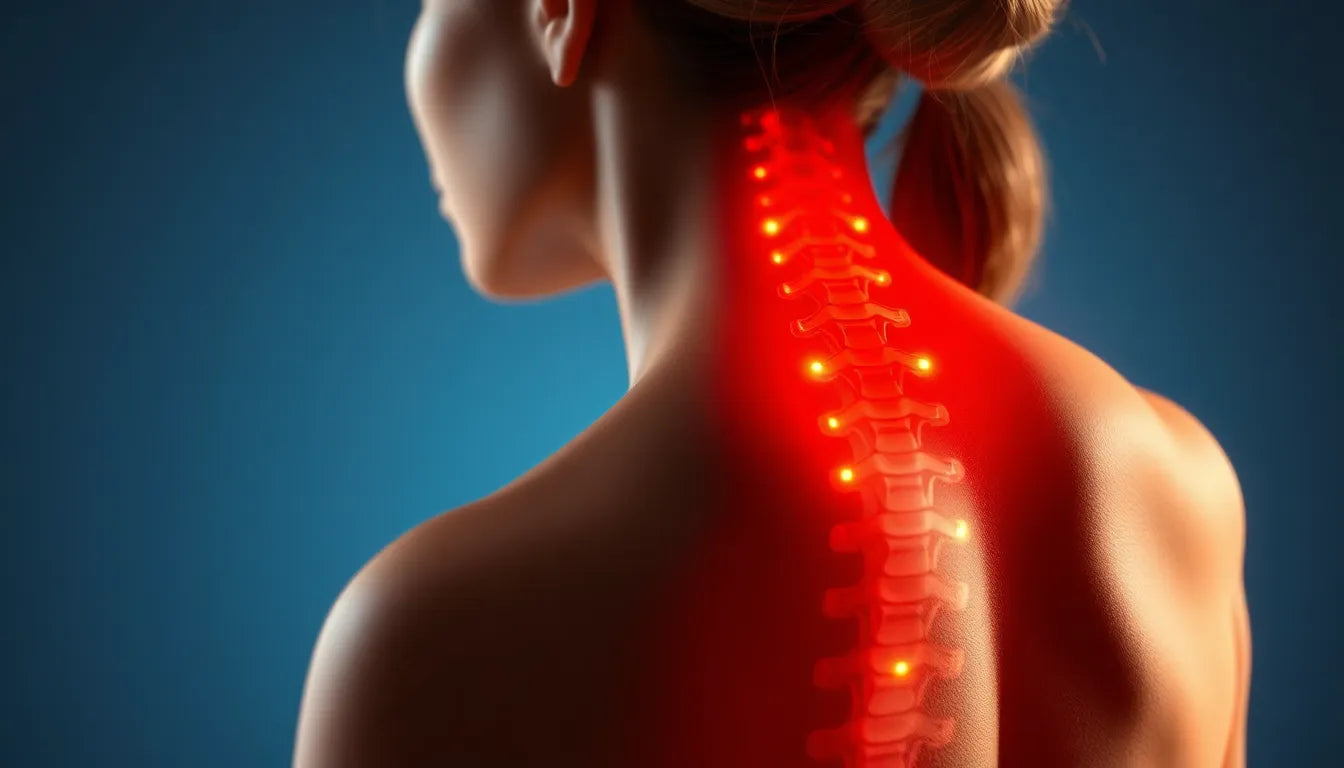Fallen arches, or "nedsunken forfod," are a condition where the natural arch of the foot collapses, leading to the entire sole coming into contact with the ground. This condition can arise from various causes, such as genetic predisposition, prolonged standing, obesity, or even injuries. The absence of a proper arch can significantly impact daily life, making simple activities like walking or standing uncomfortable and sometimes painful. It can also affect your posture and the way you move, potentially leading to further complications in the knees, hips, and back.
Addressing fallen arches is crucial not just for comfort but also for maintaining overall physical health. Ignoring the issue can lead to chronic pain and increased risk of injuries. One effective way to manage and potentially improve this condition is through targeted exercises. These exercises are designed to strengthen the muscles of the foot and help restore the natural arch, thereby improving function and reducing discomfort.
how exercises help manage fallen arches
Regularly engaging in specific exercises can significantly benefit those with fallen arches. These exercises work by strengthening the intrinsic muscles of the foot, which support the arch and help in maintaining its shape. Over time, a consistent exercise routine can enhance muscle tone and flexibility, thereby improving the foot's ability to bear weight and distribute pressure evenly across the sole.
The benefits of incorporating these exercises into your daily routine are manifold. Not only can they help alleviate pain associated with fallen arches, but they also play a preventative role. By strengthening the foot muscles, you reduce the risk of further deterioration and the potential development of related issues in other parts of the body. Moreover, exercises can improve your overall balance and coordination, contributing to better posture and movement efficiency.
It's important to approach the management of fallen arches holistically. While exercises are a key component, they work best when combined with other supportive measures. Wearing appropriate footwear that provides adequate support and considering orthotic inserts can complement the benefits of exercises. These combined efforts can create a more stable foundation for your feet, enhancing comfort and mobility in your everyday life.
By understanding the importance of exercises for fallen arches and integrating them into your routine, you take a proactive step towards improving your foot health. This approach not only addresses the current discomfort but also helps in preventing potential future complications, ensuring that you can walk, run, and stand with confidence and ease.

Men's Posture Shirt™ - Black
Activates muscles, may reduce pain, and supports posture for daily comfort.
understanding the anatomy and function of the foot arch
The foot arch is a crucial component of our anatomy, playing a vital role in weight distribution and movement. It acts as a natural shock absorber, helping to distribute the body's weight across the feet and providing balance and support during movement. The arch's elasticity also aids in absorbing the impact from activities like walking, running, and jumping, thereby protecting the rest of the body from potential stress and strain.
When the arch collapses, as seen in fallen arches, this natural mechanism is disrupted. Common symptoms include pain in the heel or arch area, swelling along the inside of the foot, and difficulty standing on tiptoe. These symptoms can lead to alterations in posture and gait, as the body tries to compensate for the lack of support from the arch. Over time, this can result in additional strain on the knees, hips, and lower back, exacerbating discomfort and potentially leading to further complications.
exercise program for strengthening foot arches
To effectively manage fallen arches, a structured exercise program focusing on strengthening the foot muscles is essential. Consistency and gradual progression are key to achieving the best results. Here are some exercises that can help restore the natural arch and improve foot function:
gripping exercises with toes
Gripping exercises are excellent for enhancing toe flexibility and strengthening the muscles that support the arch. To perform this exercise, sit comfortably and scatter small objects like marbles or pebbles on the floor. Use your toes to pick up each object and place it in a container. This exercise targets the intrinsic muscles of the foot, promoting better support and stability.
arch massage with a ball
Massaging the arch with a ball can relieve tension and improve circulation in the foot. Use a tennis or massage ball and roll it under your foot from the heel to the forefoot, applying gentle pressure. This exercise helps relax the foot muscles, reducing stiffness and discomfort associated with fallen arches.
foot twisting exercise
To perform the foot twisting exercise, place your foot on the opposite thigh and gently twist it as if wringing a cloth. Hold the foot with both hands and apply a gentle twisting motion. This exercise increases flexibility and mobility in the foot joints, aiding in the restoration of the arch’s natural function.
short foot exercise
The short foot exercise focuses on engaging the muscles of the arch to “lift” the foot without curling the toes. Sit with your feet flat on the ground and concentrate on drawing the arch upwards. This exercise strengthens the intrinsic muscles of the arch, promoting natural support and improving overall foot stability.
toe stretch and bend
Toe stretch and bend exercises are beneficial for improving flexibility and reducing stiffness in the foot and toes. Bend your toes under the foot to stretch the top of the foot, and gently press down to create a stretch on the foot's dorsum. Regular practice of this exercise can enhance the range of motion and alleviate tension in the foot.
Incorporating these exercises into your daily routine can significantly benefit those with fallen arches. By strengthening the foot muscles and improving flexibility, you can enhance the arch's support and function, reducing discomfort and preventing further deterioration. Remember to combine these exercises with supportive footwear and orthotic inserts for optimal results.
Taking a proactive approach to managing fallen arches through targeted exercises can lead to improved foot health and overall well-being. By dedicating time to these exercises, you are investing in a future of pain-free movement and enhanced quality of life.

Lumbar support belt
Provides adjustable lower back support and relief, ideal for lumbar pain.
additional exercises for balance and coordination
Incorporating balance and coordination exercises into your routine is crucial for supporting foot health, especially when dealing with fallen arches. These exercises not only strengthen the foot muscles but also enhance overall stability and proprioception, which is the body's ability to sense its position in space. Improving these aspects can significantly contribute to better posture and movement efficiency.
balance on one leg
Practicing balance on one leg is an effective exercise to enhance proprioception and strengthen the stabilizing muscles in the foot and ankle. To perform this exercise, stand on one leg for 30 seconds, then switch to the other leg and repeat. For added challenge, try closing your eyes or standing on an uneven surface. This exercise helps improve balance and stability, which are essential for maintaining a healthy foot arch.
integrating exercises into your daily routine
To maximize the benefits of these exercises, it's important to integrate them into your daily routine. Here are some tips to help you incorporate them seamlessly:
- Set a schedule: Allocate specific times during the day for your exercises, such as while watching TV or during breaks at work.
- Pair with other activities: Combine exercises with daily tasks, like doing toe stretches while brushing your teeth or balance exercises while waiting for your coffee to brew.
- Stay consistent: Consistency is key for long-term benefits. Aim to perform these exercises at least 3-4 times a week.
- Be patient: Improvements in foot health and arch support take time. Stay committed to your routine and gradually increase the intensity as your strength improves.
frequently asked questions
what causes fallen arches?
Fallen arches can result from several factors, including genetic predisposition, prolonged standing, obesity, or injuries. They can also develop due to age-related wear and tear or as a result of certain medical conditions, such as arthritis or diabetes.
how often should I perform these exercises?
For optimal results, aim to perform these exercises at least three to four times a week. Consistency is crucial in strengthening the foot muscles and improving arch support. Each session can last between 10 to 20 minutes, depending on your comfort level and schedule.
can these exercises fully restore my foot arches?
While exercises can significantly strengthen the muscles supporting the arch and alleviate discomfort, they may not fully restore the arches to their original state, especially if the condition is severe. However, they play a vital role in managing symptoms and preventing further deterioration. A comprehensive treatment plan, including supportive footwear and orthotic inserts, can enhance the effectiveness of exercises.
when should I seek professional help?
If you experience persistent pain, swelling, or difficulty performing daily activities despite regular exercise, it may be time to seek professional evaluation. A healthcare provider or podiatrist can assess your condition and recommend additional treatments, such as custom orthotics or physical therapy, to address your specific needs.
By understanding the importance of exercises for fallen arches and integrating them into your routine, you take a proactive step towards improving your foot health. This approach not only addresses the current discomfort but also helps in preventing potential future complications, ensuring that you can walk, run, and stand with confidence and ease.
Kilder
- Hafaro. ”Gode råd: Nedsunken forfod øvelser.”
- YouTube. ”Øvelser for nedsunken forfod.”
- Din Flexible Sundhed. ”Øvelser for nedsunket forfod.”
- YouTube. ”Træning for nedsunken forfod.”
- Den Intelligente Krop. ”Øvelser til nedsunken forfod.”
- KSO. ”Klinik øvelser for nedsunken forfod.”
- YouTube. ”Fodøvelser for bedre støtte.”
- Fysio.dk. ”Krop & Fysik: Sunde fødder.”


















